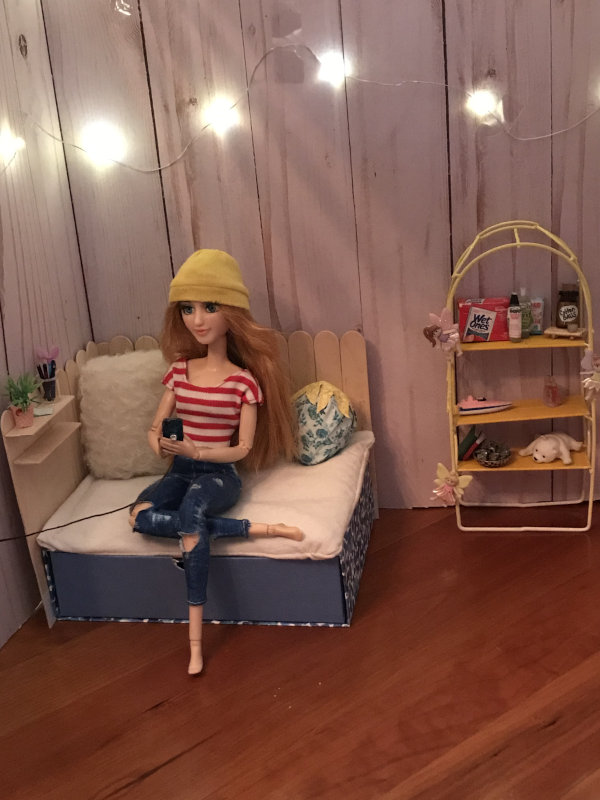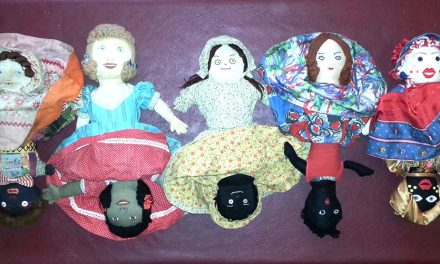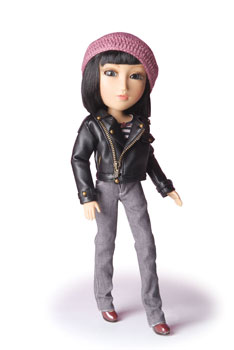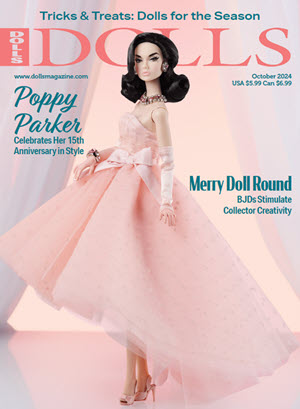By Sharon Verbeten
“It was a wonderland over there.”
That’s how Jennifer Latham-Robinson describes her mother’s house — filled to the brim with antiques, vintage children’s books, and old dollhouses. It’s no surprise, then, that Robinson fell in love with fanciful old things.
It’s also no surprise that Robinson uses her own imagination and creativity to create her Outsider Dolls from her home in Durham, North Carolina. Along with her late grandmother and mother — and now even her daughter — Robinson is part of a four-generation family creating dolls and/or miniatures.
Robinson’s whimsical standouts evoke the offbeat world of Alice in Wonderland, as well as those of artists Maurice Sendak and Edward Gorey, and director Tim Burton. In fact, her company website proclaims, “They stand out in the doll room. They’re the toy outsiders. Luckily, they have some misfit friends to keep them company.”
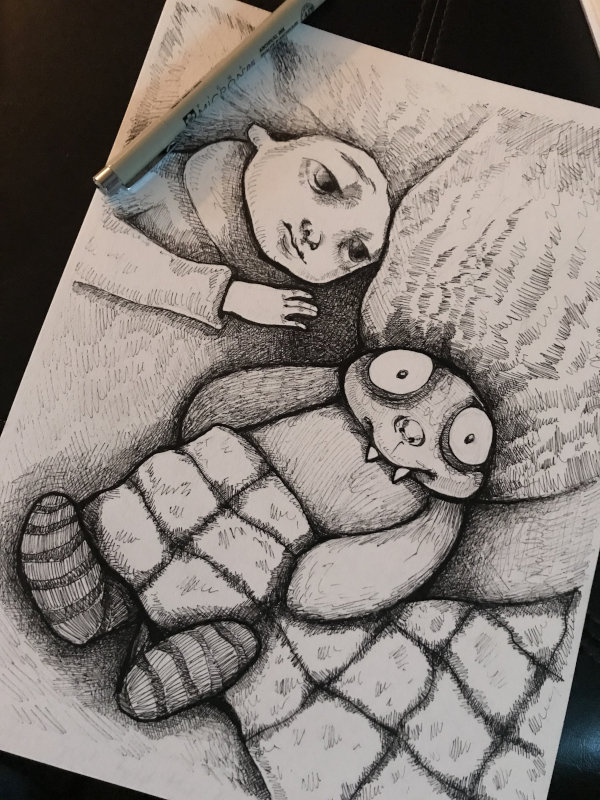
Robinson said her dolls’ quirky, dreamlike quality stems from her personal drawing style. “I’ve always gravitated towards that … I love seeing it evolve … it’s a little character that has life in it. My whole family found beauty in the unusual — unusual was good.”
Robinson’s dolls — some made from cloth, some silicone, are all one-of-a-kind (OOAK) creations ranging from 9 to 18 inches. They have names like the Forgotten Boys, the Booshkas, the Monsters, and the Little Ones (half girls, half dolls).
A Creative Family
Robinson grew up in a creative family. Her late grandmother, Manuela Sanchez, was a doll collector who crafted wood miniatures as a hobby. Robinson’s mother, Nancy Latham, fled communist Cuba when she was only 15, eventually landing in Miami. “I always loved cloth dolls,” Latham said. “When I was young, I only played with paper dolls in Cuba.”
Latham taught herself how to create the dolls now known as Wistful Children, which are every bit as fanciful as her daughter’s creations. She said she’d see cloth dolls and think, “I’m going to try to do that.” But this was in the 1980s, pre-Internet, so she said, “I would just look at the dolls and figure it out.” She also learned to make teddy bears by looking at pictures in books.

When Latham showed people her dolls, they realized her talent. “One day, somebody called me and asked me if I wanted to be in a doll show, so I made a bunch of dolls.” She priced them at $50, but an author of doll books told her she was selling herself short. So she changed the price to $500 — and “I sold out,” Latham recalled.
She started her company, Wistful Children, in 1989 and attended the American International Toy Fair in New York for many years. She still creates today, making about 25 cloth dolls a year and still attending shows. Her dolls’ faces are modeled after children in turn-of-the-century photographs. “They always have that wistful look; they never smiled. They had to stand so long for the photograph,” she said.
Like Mother, Like Daughter
Latham encouraged her daughter to try making dolls. “I had been sculpting and drawing my whole life,” said Robinson. “I really kind of sat down and learned what kind of doll I wanted to make; I tried to come up with my story, my theme.”
That story is important to both Robinson and her mother. “Even before we start making the dolls, we start coming up with what’s the story behind the dolls.”
Robinson has been especially fond of her little monsters, each of which comes with a tiny glass bottle around its neck. “Monster owners are encouraged to keep the monster with its bottle — otherwise, the monster may become irritable and act out in unpleasant ways,” she said.
Robinson feels her dolls are “a culmination of everything; it takes little parts of everything I like to do and that I’m good at.” That includes 3D design, fabrication, illustration, storytelling, business development and marketing. Her dollmaking “is the one thing that touches on everything.”
Robinson’s husband, David, is a visual artist, as is their 16-year-old daughter, Hayden. Their 12-year-old daughter, Gwynn, has been into “small things.”

“She makes miniature worlds — she sets up a room, makes the walls, wallpaper, shelves,” said Robinson. Gwynn added, “It can be really hard sometimes, but I just enjoy making miniature stuff.”
When she’s not creating dolls, Robinson — herself an amputee — runs Functional Restorations, a prosthetics company, with her husband, fabricating silicone prostheses.
In creating their out-of-the-box dolls, Robinson and Latham have each found their niche in a world with many other kinds of — often more mainstream — dolls.
“The beauty of the doll world is its diversity,” Robinson said.









